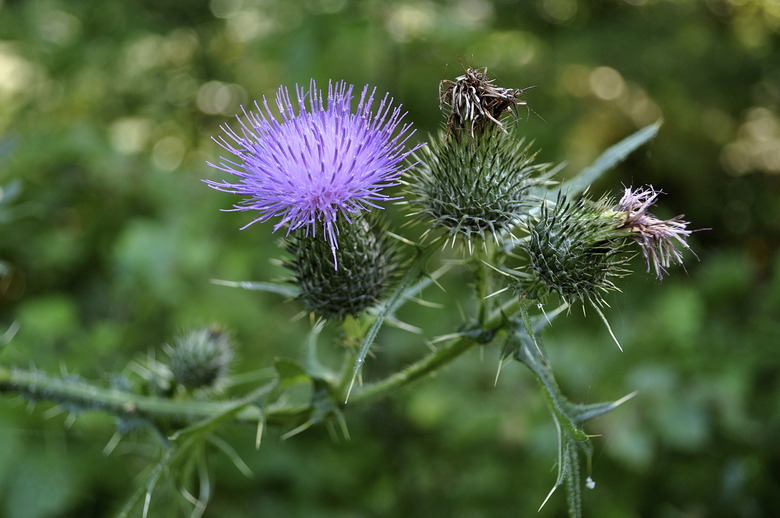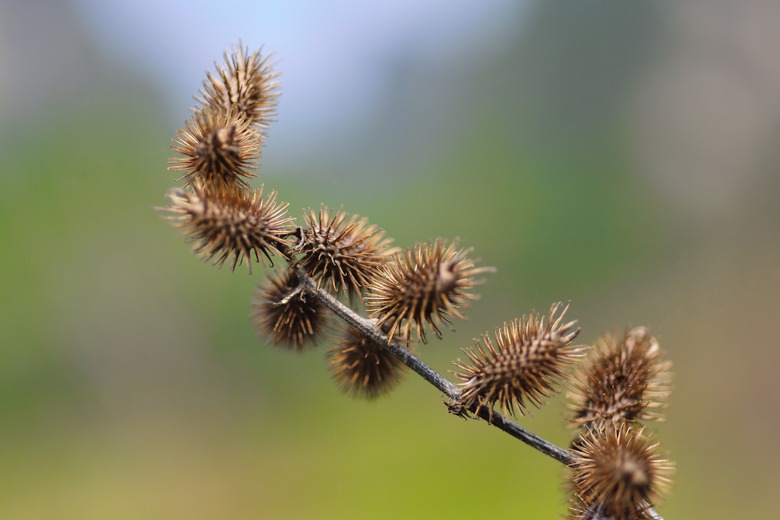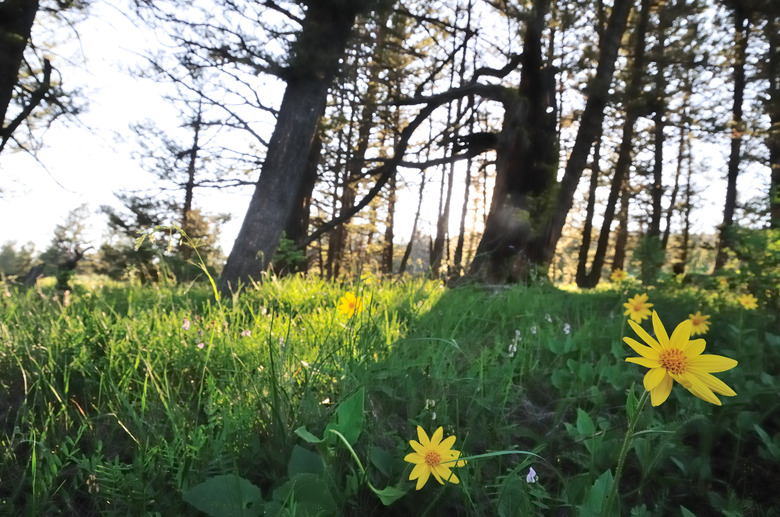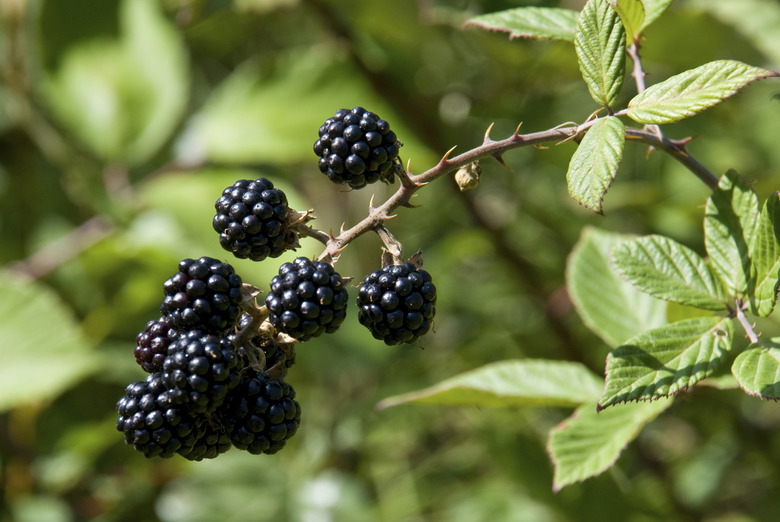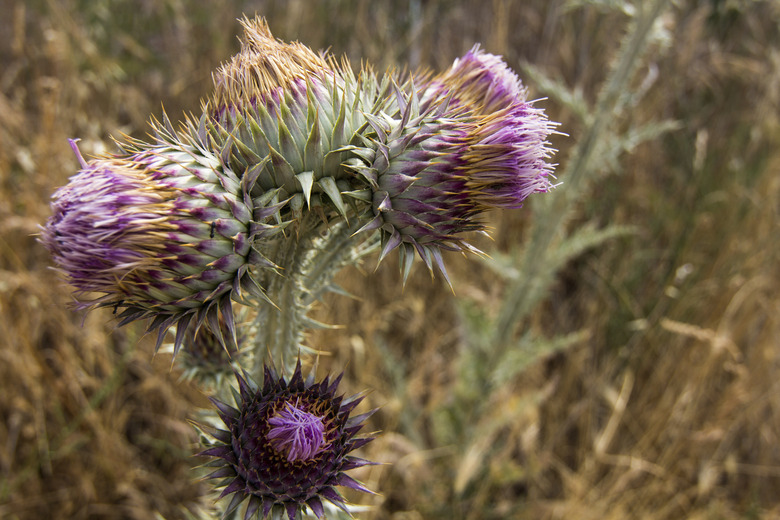How To Identify Weeds With Thorns
Weeds with thorns are easily distinguished from other types of weeds by examining the location of the thorns, spines or prickles. Some weeds bear thorns only on their fruit or only on the stem at the leaf base, while others are covered on all or most plant parts. The location of the thorns helps to narrow down the type of weed and together with leaf shape and growth habit helps to identify the weed. Identifying the weed at an early stage, when it is young and still small, makes it easier to get rid of and cuts down on scratches during removal.
Thorns on Fruit
Sometimes, you can identify weeds that bear thorns or spines on their fruits when they are still seedlings. An example is the common cocklebur (Xanthium strumarium), which grows in U.S. Department of Agriculture plant hardiness zones 3 through 11. The mature plant bears yellowish-green, egg-shaped fruits covered with thorns with two on the tip ending in hooks. Each fruit, called a bur, contains two seeds. When the common cocklebur develops from the seed, the bur often remains attached to the bottom of the plant. The common cocklebur is a widespread, annual plant and in in fields, along roadsides and wastelands.
- Weeds with thorns are easily distinguished from other types of weeds by examining the location of the thorns, spines or prickles.
- When the common cocklebur develops from the seed, the bur often remains attached to the bottom of the plant.
Thorns at Leaf Base
Some weeds only have thorns or spines at leaf nodes. Prickly sida or teaweed (Sida spinosa), growing in USDA zones 4 through 11, has thorns at the base of each leaf. You can identify the weed easily at an early growth stage by the spines at leaf bases and the characteristic heart-shaped seed leaves or cotyledons. Mature prickly sida has small, yellow flowers and 8- to 20-inch hairy stems. It grows in pastures, crop fields and often in garden beds.
Thorns on Stems
Weedy brambles, including blackberries and rasberries, belong to the genus Rubus and cover their stems with spines. Wild brambles are native or may have escaped from cultivated landscapes. If left unchecked, brambles can form impenetrable thickets. Brambles grow throughout the United States in USDA zones 3 through 11. They have long, arching stems and form new plants where the stems touch the ground. Brambles can also propagate by seed. They provide food for birds and other wildlife. Brambles prefer sunny, open locations and are found near orchards, roadsides, streams and ditches. Seedlings often pop up in garden beds.
- Some weeds only have thorns or spines at leaf nodes.
- They have long, arching stems and form new plants where the stems touch the ground.
Thorns All Over
Thistles (Cirsium spp.) are plants that have spines on leaves and stems, and some thistles, such as the bull thistle (Cirsium vulgare) also has spine-tipped bracts, which are specialty leaves associated with flowers. Bull thistle is a biennial plant that grows in USDA zones 2 through 11. In the first year, it only forms a basal rosette of highly-lobed leaves with large, stiff spines at the midrib and leaf margins. During the second year, bull thistle grows 2- to 6-foot-tall stems that bear pink-magenta flowers. Bull thistle prefers sunny areas with rich soil, but it will also grow in various other places, including old fields and roadsides.
References
- UC IPM: Common Cocklebur (Xanthium Strumarium)
- USDA Plants Database: Xanthum L. Cocklebur
- Virginia Tech Weed Identification Guide: Prickly Sida or Teaweed: Sida Spinosa
- USDA Plants Database: Sida Spinosa L. Prickly Fanpetals
- UC IPM: Wild Blackberries (Rubus spp.)
- USDA Plants Database: Rubus L. Blackberry
- King County, Washington, Weed Identification: Bull Thistle Cirsium Vulgare
- USDA Plants Database: Cirsium Vulgare (Savi) Ten. Bull Thistle
